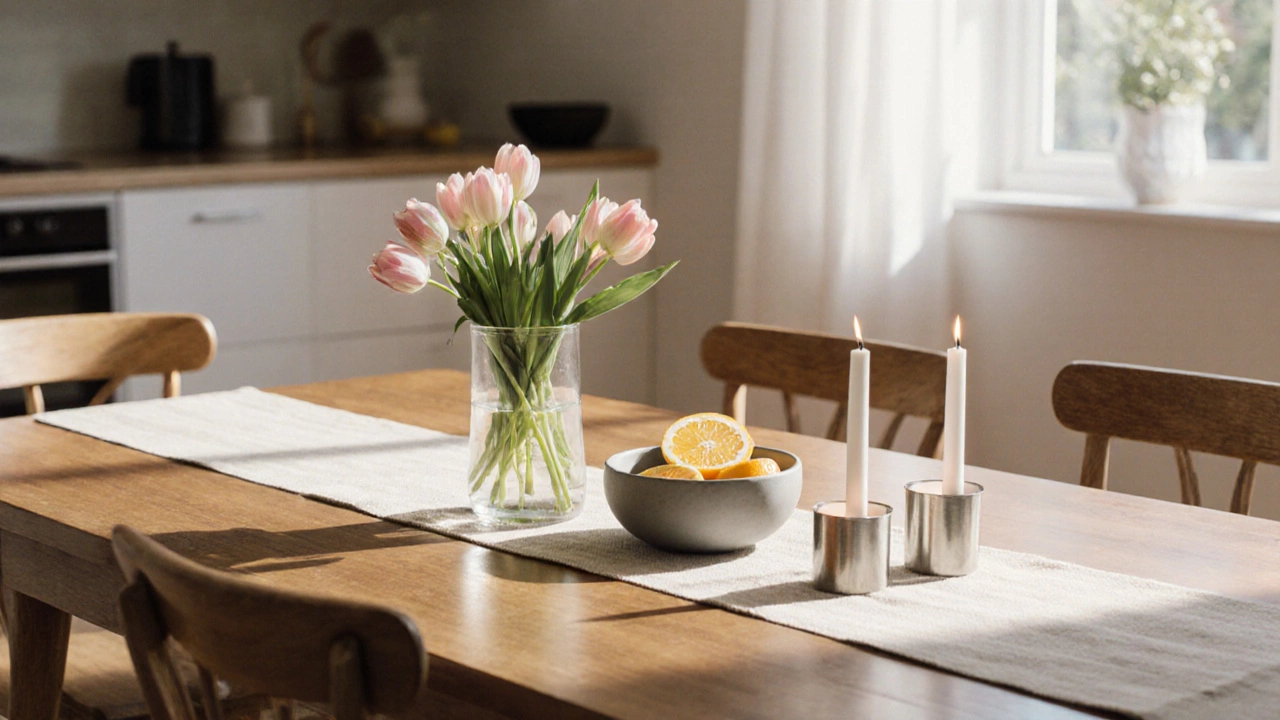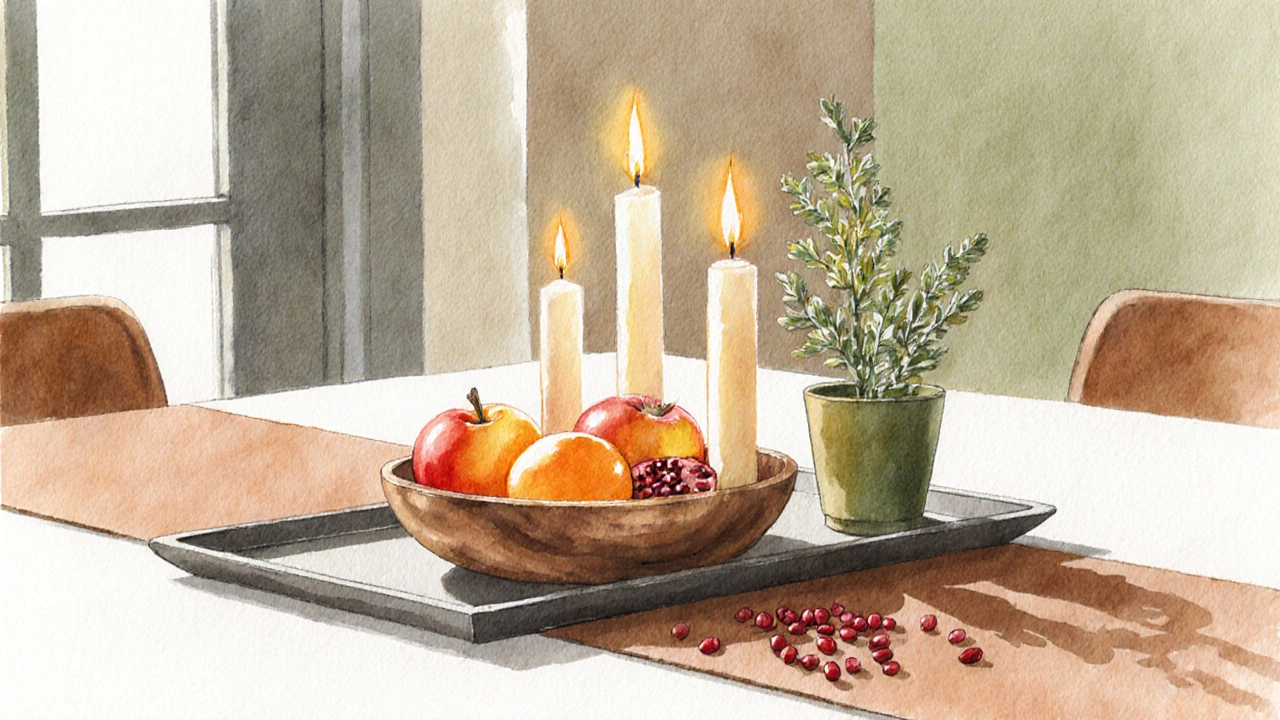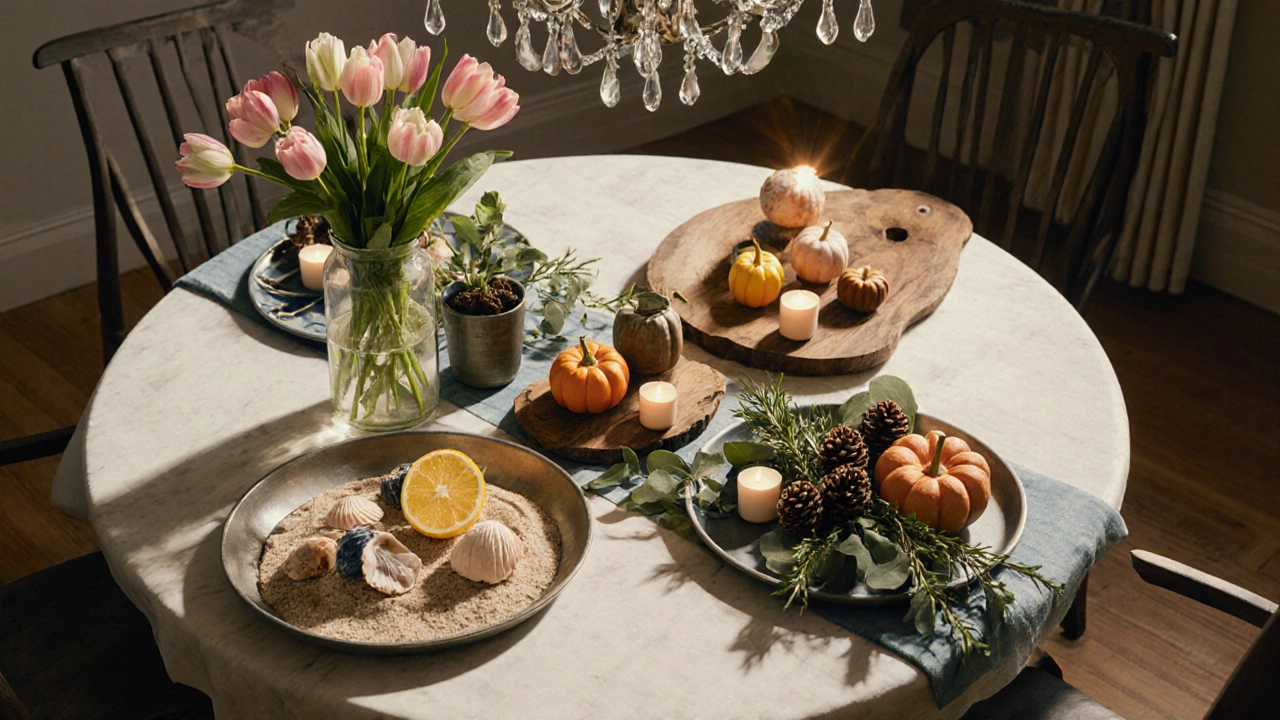
Dining Room Table Centerpiece Calculator
How to Use
Enter your table dimensions and choose your table type to get ideal centerpiece recommendations based on article guidelines.
Key Guidelines:
- Centerpiece width ≤ 1/3 of table width
- Height: 10-15cm for long tables, up to 30cm for small tables
- Minimum 20cm clearance around centerpiece
Why It Matters
The right size creates visual balance, prevents blocking sightlines, and enhances the dining experience without compromising functionality.
Article Reference:
"The centerpiece should occupy about one-third of the table's width at most... Keep enough clearance for plates, glasses, and serving dishes—ideally at least 20 cm around the perimeter."
Recommended Centerpiece Dimensions
When it comes to adding personality to your meals, a Dining Room Table Centerpiece is a decorative arrangement placed in the middle of the table to enhance visual appeal and set the mood can make a huge difference. Whether you’re hosting a holiday feast or enjoying a quiet dinner for two, the focal point of the table tells guests what kind of experience to expect.
Why a Centerpiece Matters
A well‑chosen centerpiece does three things at once. First, it creates visual balance by breaking up the flat expanse of the tabletop. Second, it adds a layer of storytelling-think fresh herbs in summer, pine cones in winter, or citrus slices in spring. Third, it gives guests something to glance at between bites, which subtly prolongs conversation and makes the meal feel more relaxed.
Popular Types of Centerpieces
There’s no one‑size‑fits‑all answer, but most people gravitate toward a handful of classic categories:
- Floral arrangements - fresh or artificial blooms that add color and scent.
- Candles - soft light that instantly feels cozy.
- Fruit Bowl - a splash of natural sweetness and a handy snack.
- Seasonal Decor - items that match holidays or the time of year.
- Minimalist trays - sleek metal or wood platforms that hold a few curated pieces.
Each type brings its own mood, upkeep level, and cost, so match the choice to your lifestyle.
Size and Proportion: Getting the Scale Right
The centerpiece should occupy about one‑third of the table’s width at most. If your table measures 120 cm, aim for a spread no wider than 40 cm. Height matters too; a low arrangement (10‑15 cm) works well with long, rectangular tables, while a taller stack (up to 30 cm) makes a stronger impact on smaller round tables. Keep enough clearance for plates, glasses, and serving dishes-ideally at least 20 cm around the perimeter.
Material Matters
Choosing the right material helps the centerpiece blend with existing decor. Glass Vase offers elegance and lets light pass through, while metal Decorative Tray adds a modern edge. Wooden bowls bring warmth, and ceramic containers can inject a pop of color. Think about durability too-if you have kids or pets, a sturdy metal tray might survive better than a delicate porcelain vase.
Lighting Up with Candles
Nothing feels more intimate than a flickering flame. Choose unscented candles for dinner parties (strong fragrances can clash with food aromas) and opt for pillar or votive sizes that fit within your height budget. For safety, place candles in sturdy holders and keep them at least 15 cm from the table edge. If you prefer a low‑maintenance option, LED tea lights mimic real candles without the fire risk.
Blooming with a Vase and Fresh Flowers
Fresh flowers instantly lift a room’s energy. Pick a vase that matches the table’s material-clear glass for a contemporary look, or a matte ceramic for a country vibe. For a lasting display, trim stems at a 45‑degree angle, change the water daily, and add a pinch of sugar to keep blooms fresh longer. If you’re short on time, a pre‑arranged bouquet from a local market works just as well.
Refreshing with a Fruit Bowl
A fruit bowl adds color, health, and conversation. Choose a shallow ceramic or wooden bowl to showcase slices of apples, oranges, pomegranate seeds, or even seasonal berries. The natural hues complement most color palettes. Plus, guests can help themselves, turning the centerpiece into a functional snack station.

Seasonal Decor for Holiday Flair
Align your centerpiece with the calendar to keep things fresh. Here are quick ideas:
- Spring: pastel tulips in a glass vase, paired with a small potted herb.
- Summer: a nautical tray holding seashells, sand, and a citrus bundle.
- Fall: pumpkins, gourds, and a sprig of rosemary on a wooden board.
- Winter: pine cones, eucalyptus, and a few tealight candles in a metallic tray.
Seasonal items are inexpensive, often found in local craft stores, and can be swapped out year after year.
Adding a Table Runner Underneath
A runner anchors the centerpiece and protects the table. Choose a runner that contrasts just enough to make the centerpiece stand out-think a neutral linen runner beneath a bold floral arrangement. The runner also offers a surface for small plates or napkins, further integrating the centerpiece into the dining flow.
Using a Decorative Tray as a Base
Trays keep everything tidy and make swapping pieces easy. A round metal tray works well with candle clusters, while a rectangular wood tray accommodates a fruit bowl plus a small vase. The tray itself can become a style statement-matte black for modern, brushed gold for glamour, or reclaimed wood for farmhouse charm.
Green Touches with Plants
Small potted succulents or a single snake plant add a breath of fresh air without much upkeep. Place the pot at the edge of the centerpiece so it doesn’t block sightlines. If you love herbs, a tiny basil or mint pot can double as a garnish source for the meal.
DIY Ideas That Won’t Break the Bank
Get creative with items you already own:
- Reuse an old picture frame as a low‑profile tray, line it with burlap, and fill it with candles.
- Wrap a glass jar in twine, add seasonal pine sprigs, and set a tealight inside.
- Paint a wooden cutting board, place a glass vase in the center, and surround it with fresh herbs.
These projects add personality and let you tweak the look whenever you feel like a change.
Common Mistakes to Avoid
- Overcrowding - too many items block guests’ view of each other’s plates.
- Too tall - a towering arrangement can cast shadows over food.
- Strong scents - scented candles or heavy perfume disrupt the dining experience.
- Neglecting maintenance - wilted flowers or melted candles look sloppy.
Keep the design simple, functional, and aligned with the rest of your room’s style.
Quick Checklist Before You Set the Table
- Measure table width; keep centerpiece under one‑third of the space.
- Choose a height that doesn’t exceed 30 cm (or lower for long tables).
- Pick materials that can stand up to spills and traffic.
- Test the arrangement with plates and glasses to ensure clearance.
- Refresh or replace any wilted or burned elements before guests arrive.

Side‑by‑Side Comparison of Centerpiece Types
| Type | Style | Maintenance | Cost (USD) | Best Season |
|---|---|---|---|---|
| Floral Arrangement | Elegant, colorful | High - replace water daily | 30‑80 | Spring & Summer |
| Candles | Cozy, warm | Low - replace when burned | 10‑25 | Fall & Winter |
| Fruit Bowl | Fresh, vibrant | Medium - wash fruit | 15‑40 | All year (adjust fruit) |
| Seasonal Decor | Thematic, fun | Variable - depends on items | 20‑60 | Specific holidays |
| Minimalist Tray | Sleek, modern | Very low | 25‑70 | Any |
Pick the row that matches your budget, style, and the time you can devote to upkeep. The dining room table centerpiece you choose will set the tone for every meal that follows.
Final Thoughts
There’s no single “right” answer to what you should put in the middle of your dining room table. The best choice reflects your home’s aesthetic, the occasion, and how much effort you want to invest. By keeping proportions balanced, selecting durable materials, and swapping seasonal accents, you’ll create a focal point that feels fresh yet familiar day after day.
How tall should a dining room table centerpiece be?
Aim for 10‑30 cm tall depending on table size. Shorter tables handle taller pieces; long rectangular tables work best with low (10‑15 cm) spreads.
Can I use scented candles on the dining table?
Generally avoid strong scents because they compete with food aromas. Unscented or lightly scented candles are safer choices.
What’s the easiest low‑maintenance centerpiece?
A simple metal or wood tray holding a few evergreen sprigs and a tealight offers style with almost no upkeep.
How often should I change a fresh‑flower centerpiece?
Replace the water daily and trim stems every 2‑3 days. Most bouquets look best for 4‑5 days before wilting.
Is it okay to put plates directly on a runner with a centerpiece?
Yes, as long as the runner is wide enough (at least 30 cm) to accommodate plates without covering the centerpiece.



